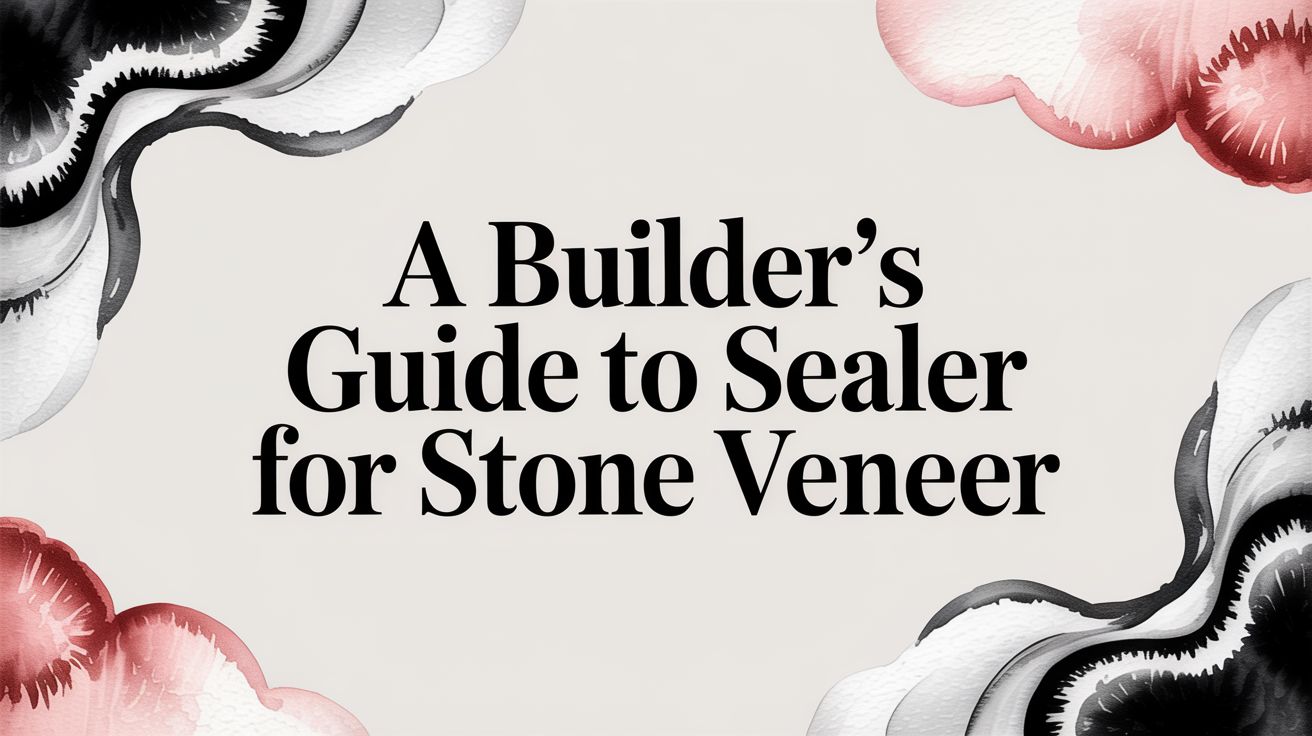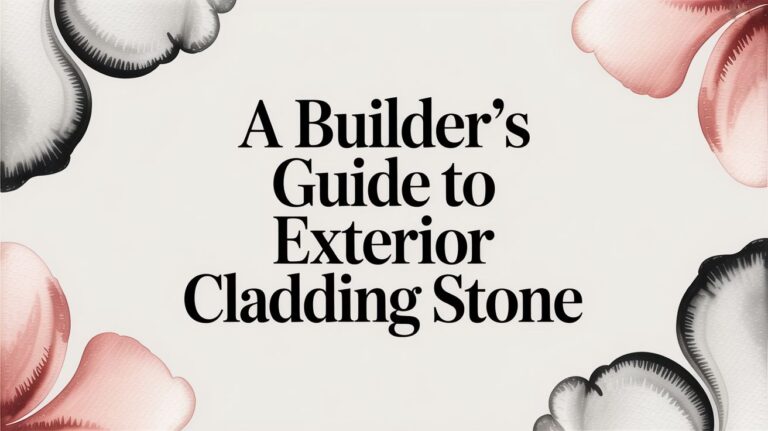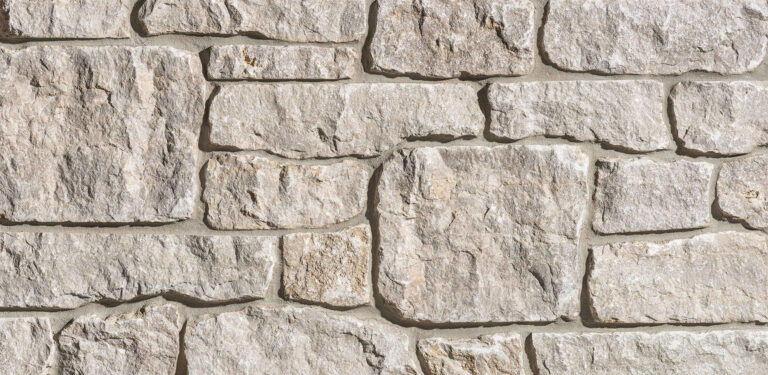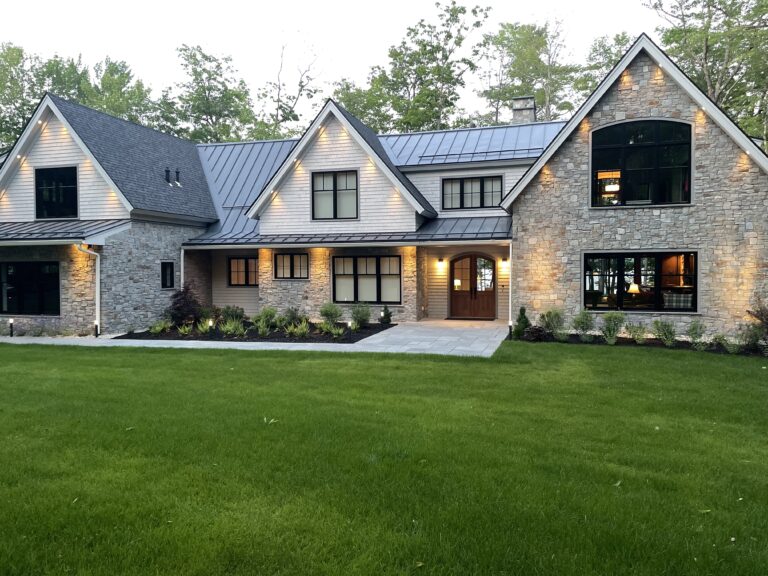Your cart is currently empty!
A Builder’s Guide to Sealer for Stone Veneer
Applying a quality sealer for stone veneer is a crucial step for long-term performance and maintenance. While not always mandatory for our durable natural stone, it is highly recommended to protect your investment from moisture, staining, and the harsh freeze-thaw cycles common in New England. Properly sealing the stone preserves its authentic color and texture for decades. For more information on the inherent properties of our material, see our guide on natural thin stone veneer.
This is especially true for high-exposure applications, such as exterior walls in coastal or freeze-thaw zones, outdoor kitchens, and high-traffic interior areas where spills or dirt are a concern.
Why Seal Real Stone Veneer?
Stoneyard’s thin stone veneer is 100% real New England stone, sourced from regional fieldstone and quarries. At our Littleton, MA facility, each piece is hand-sorted and sawn to a thickness of approximately ¾–1¼ inch. All our stone is inherently dense and carries our Harsh Climate Approved (HSA) rating, confirming its durability against severe weather. You can explore the full range of our natural stone veneer products here.
Given the natural resilience of our stone, sealing is not a structural requirement but a protective measure. It enhances durability, simplifies maintenance, and protects the stone’s appearance.
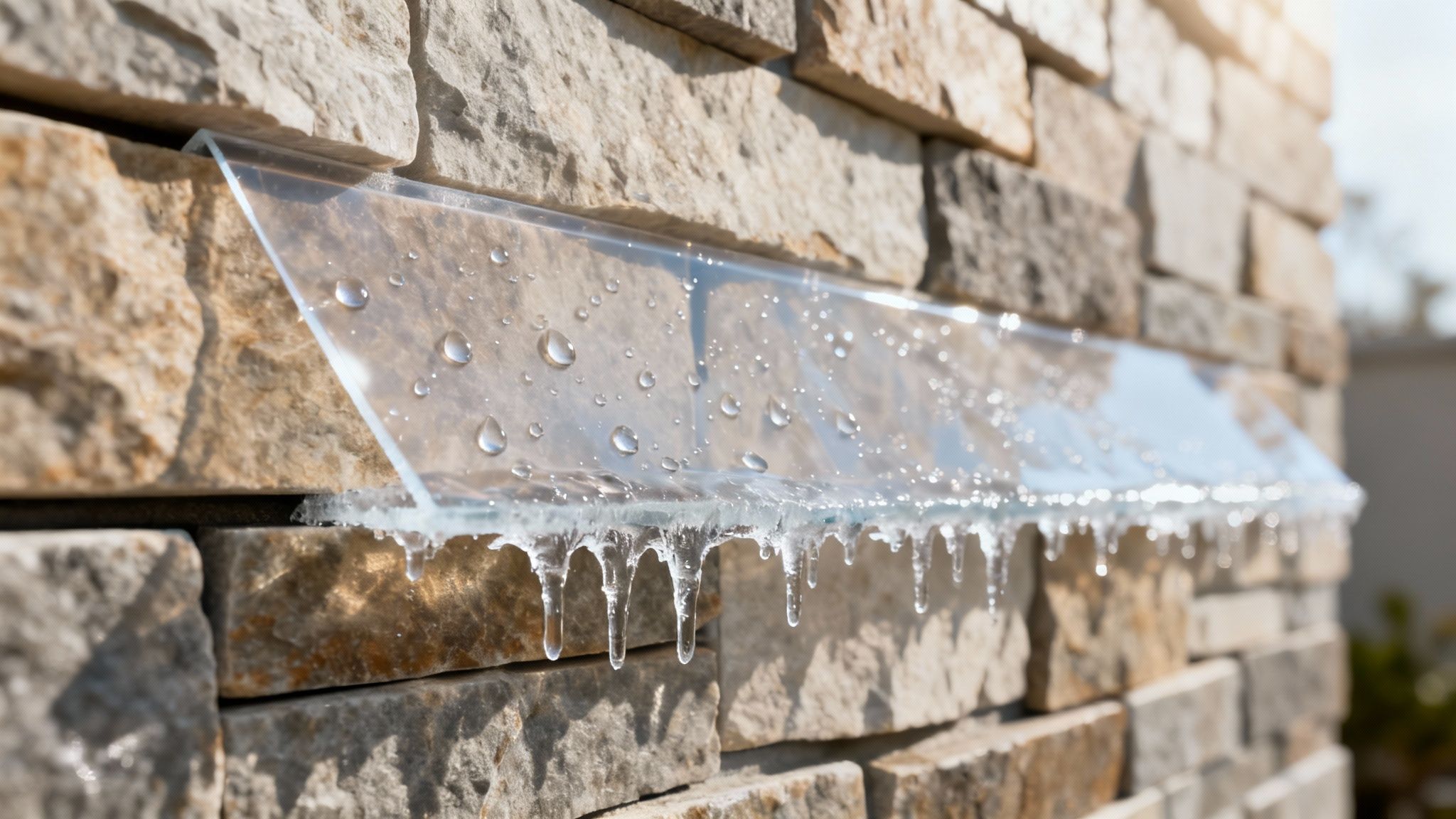
This distinguishes real stone from manufactured concrete products. Brands like Eldorado Stone or Cultured Stone produce cement-based veneers that are porous and absorb water. For these faux materials, sealing is a necessity to prevent deterioration, color fading, and delamination under freeze-thaw conditions.
For Stoneyard’s authentic stone, sealing is a performance enhancement that safeguards the material’s natural character and makes cleaning easier.
We recommend sealing for these applications:
- Exterior Walls: Especially in coastal regions with salt spray or areas with heavy rain and snow. Sealing adds a crucial layer of defense for any outdoor installation.
- Outdoor Kitchens: A sealer provides robust protection against grease, food, and beverage stains.
- Fireplaces and Chimneys: Guards against soot and smoke staining that can accumulate over time.
- High-Traffic Commercial Areas: Simplifies cleanup in lobbies, restaurants, and retail spaces.
For a complete overview of suitable projects, review our thin stone veneer applications guide.
The Role of a Sealer on Natural Stone
A sealer works by penetrating the microscopic pores of the stone to create a barrier that repels water and other contaminants. There are two primary types:
- Penetrating Sealers: These soak into the stone, creating an invisible, breathable shield without altering the surface texture. This is the recommended type for natural stone.
- Surface Sealers (Topical Coats): These form a film on top of the stone. They are not recommended for exterior natural stone as they can trap moisture and fail under UV exposure.
Sealers also come in water-based or solvent-based formulas. Modern water-based penetrating sealers offer excellent performance with lower VOCs, making them the preferred choice for most applications. Learn more about the technical aspects of installing stone veneer.
Sealer Application Recommendations for Stoneyard Natural Stone Veneer
This table breaks down our recommendations for different applications, helping you decide when sealing is a must-do versus a nice-to-have.
| Application Area | Sealing Recommendation | Primary Reason |
|---|---|---|
| Exterior Siding | Highly Recommended | Protects against weathering, UV exposure, acid rain, and freeze-thaw damage. |
| Coastal Homes | Highly Recommended | Provides a critical barrier against corrosive salt spray and high humidity. |
| Outdoor Kitchens | Highly Recommended | Shields the stone from grease, oils, food spills, and other common stains. |
| Fireplaces/Chimneys | Highly Recommended | Prevents soot and smoke staining, making cleaning much easier. |
| Interior Walls | Optional | Recommended for high-traffic or “splash zone” areas like kitchens/bathrooms. |
| Commercial Lobbies | Recommended | Simplifies maintenance and protects against scuffs, dirt, and spills. |
Deciding to seal your stone veneer is an investment in its beauty and longevity. It’s a simple step that protects the natural character of the stone for many years to come.
Choosing the Right Sealer for Your Project
Selecting the correct sealer for natural stone veneer preserves its authentic appearance and ensures long-term performance. The primary goal is to protect the New England stone without applying a coating that alters its natural texture or traps moisture.
For real stone veneer from Stoneyard, a penetrating sealer is the only correct choice. These products absorb deep into the stone’s pores, creating an invisible, breathable shield that repels water and oil without changing the natural texture.
This approach is fundamentally different from surface or topical sealers, which form a film on top of the stone.
A topical sealer can trap moisture behind the veneer, which is a significant risk in New England’s freeze-thaw cycles. Trapped water can lead to efflorescence or even spalling, undermining the very protection you sought to add.
Penetrating vs. Surface Sealers
The following comparison clarifies why a penetrating sealer is the professional choice for authentic stone veneer.
Penetrating vs. Surface Sealer Comparison
| Feature | Penetrating Sealer (Recommended) | Surface Sealer (Not Recommended) |
|---|---|---|
| Protection Method | Absorbs deep into the stone’s pores to repel water and stains from the inside out. | Forms a plastic-like film on the surface, essentially coating the stone. |
| Appearance | Maintains the stone’s original, natural look and texture. It is invisible once cured. | Often creates a glossy or shiny “wet look” that can appear artificial. |
| Breathability | Fully breathable, allowing moisture vapor from within the wall system to escape naturally. | Not breathable. Traps moisture, which can lead to efflorescence and freeze-thaw damage. |
| Longevity | Will not peel, flake, or turn yellow because it is integrated within the stone. | Can yellow, peel, or crack with UV exposure and general wear. |
| Performance | The only suitable choice for exterior use, especially in climates with freeze-thaw cycles. | Unsuitable for exterior applications; prone to failure and can damage the stone. |
A penetrating sealer works with the stone, while a surface sealer just sits on top of it. For projects in demanding climates, choosing durable materials is a non-negotiable. If you’re interested in the science behind this, you can learn more about advanced sealants and waterproofing solutions built for the toughest environments.
Natural Look or Color Enhancing
Your final decision comes down to aesthetics.
A ‘natural look’ sealer is completely invisible once cured. It will not change the color or texture of the stone, making it ideal for preserving the authentic appearance of collections like our Boston Blend® or Greenwich Gray.
A ‘color-enhancing’ sealer will subtly deepen the stone’s natural colors, creating a rich appearance similar to its look when wet. This effect can highlight the unique mineral details in stone like our Vineyard Granite or Colonial Tan. Sealing our Boston Blend®, for example, can slightly deepen its signature gray, tan, and brown tones.
We have more detailed guidance on stone sealing and color enhancing with PROSOCO products to help you achieve the desired finish. Always test the sealer on a leftover piece of stone first to confirm the final result.
The Professional Sealer Application Process
A methodical process is essential for achieving a durable, professional finish when sealing stone veneer. The process involves three phases: surface preparation, precise application, and adequate curing time. Rushing any step can compromise the sealer’s effectiveness.
Step-by-Step Overview of Sealing Stone Veneer
- Cleaning: The stone surface must be impeccably clean. Remove all dirt, dust, and efflorescence (chalky white residue). A clean surface is critical for the sealer to penetrate and bond correctly. Our guide on cleaning the stone provides builder-focused instructions.
- Drying: The mortar joints must be fully cured (a minimum of 28 days after installation), and the stone wall must be completely dry before applying sealer. Sealing a damp wall traps moisture, which can lead to problems.
- Applying Sealer: Use a low-pressure pump sprayer for even coverage on large surfaces. Work in manageable sections to maintain a wet edge and avoid lap marks. Apply a single, uniform coat that saturates the surface without overspraying.
- Back-Rolling: Immediately after spraying a section, use a nap roller to remove excess sealer and ensure it penetrates deeply into the stone and mortar joints rather than pooling on the surface.
- Curing Time: The sealer may be dry to the touch in a few hours, but it requires 24 to 72 hours to fully cure and achieve maximum repellency. Protect the surface from rain during this period. For visual demonstrations of proper technique, see our installation videos.
Benefits of Sealing
Properly sealing your Stoneyard natural stone veneer offers several advantages:
- Enhanced Color Depth: An enhancing sealer can deepen the natural tones of the stone.
- Easier Maintenance: A sealed surface repels stains and is easier to clean.
- Protection from Efflorescence: By blocking water penetration, a sealer helps prevent the mineral deposits that cause efflorescence.
- Freeze-Thaw Durability: Sealing reduces water absorption, adding an extra layer of defense against spalling or cracking in freezing temperatures.
For more details on these advantages, see the benefits of thin stone veneer.
Common Sealing Mistakes and How to Avoid Them
Applying a sealer correctly ensures your real New England stone performs for decades. Avoiding a few common mistakes is critical to achieving a professional, durable finish.
The most frequent error is sealing too soon after installation. Mortar requires a minimum of 28 days to fully cure. Applying a sealer before the mortar is fully cured traps moisture within the wall system, which can cause efflorescence and damage during freeze-thaw cycles. Patience is essential. For more information on installation timelines, our frequently asked questions page is a valuable resource.
Application and Surface Condition Errors
Another common mistake is applying sealer to a dirty or damp surface. Any contaminants will prevent the sealer from penetrating and bonding properly, leading to weak adhesion and a blotchy appearance. The stone must be perfectly clean and dry.
Applying excessive coats is also counterproductive. The goal is to saturate the stone, not to build a thick film. Over-application can leave a sticky residue or an unnatural sheen that detracts from the stone’s texture.
A single, uniform coat applied with a low-pressure sprayer and immediately back-rolled is the professional standard. This method allows the stone to absorb the necessary amount of sealer without leaving excess product on the surface.
Finally, using the wrong type of sealer is a critical error. Topical, film-forming products are not suitable for exterior real stone veneer as they trap moisture and can peel, flake, or yellow over time. Always use a high-quality, breathable, penetrating sealer formulated for natural stone.
To avoid these pitfalls:
- Wait for the Full Cure: Allow new mortar at least 28 days to cure.
- Prep the Surface: Ensure the stone is completely clean and dry.
- Apply a Uniform Coat: Avoid over-application to prevent a sticky or glossy finish.
- Choose a Penetrating Sealer: Use only breathable, penetrating formulas for exterior natural stone.
Maintenance and Resealing
Proper maintenance ensures the longevity of your sealed stone veneer. A high-quality penetrating sealer typically lasts 3 to 5 years, depending on the level of exposure to sun, moisture, and wear.
Resealing Intervals and Testing
To test if resealing is needed, sprinkle water on the stone surface. If the water beads up, the sealer is still effective. If the stone darkens and absorbs the water, it is time to reseal.
Before resealing, the surface must be thoroughly cleaned with compatible cleaners that will not damage the stone. Consult our stone veneer maintenance guide for detailed cleaning instructions.
For large residential or commercial projects, we recommend professional installation and sealing. You can find a certified contractor in our installer directory.
Sealed vs. Unsealed Stone Veneer
The visual difference between sealed and unsealed stone can be subtle with a natural-look sealer or more pronounced with an enhancer. Enhancing sealers deepen the colors, providing a “wet look” that highlights the stone’s texture and mineral composition. Our photo gallery showcases numerous examples of finished projects, illustrating the appearance of our various stone collections in real-world applications.
By following these guidelines, you can ensure your Stoneyard natural thin stone veneer is properly protected, maintaining its authentic New England beauty for the life of the building.
Explore the full Stoneyard Thin Stone Veneer Collection — real New England stone, made in the USA.
Order free samples at https://stoneyard.com/samples/ or schedule a virtual showroom visit at https://stoneyard.com/contact/.
